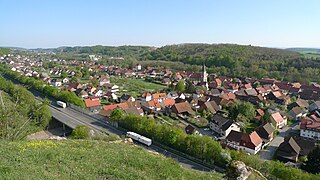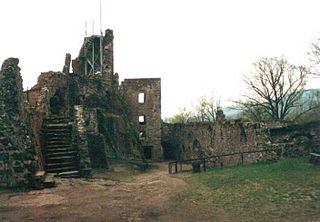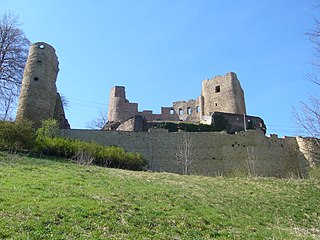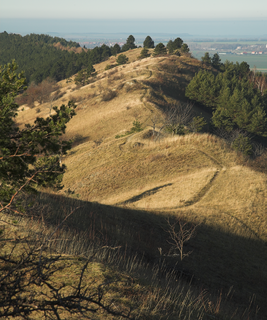
Herzberg am Harz is a town in the Göttingen district of Lower Saxony, Germany.
Ilfeld is a village and a former municipality in the district of Nordhausen, in Thuringia, Germany. It is situated at the south foot of the Harz, at the entrance to the Bährethal, 8 miles (13 km) north from Nordhausen by the railway to Wernigerode. Since 1 January 2012, it has been part of the municipality of Harztor.

Blankenburg (Harz) is a town and health resort in the district of Harz, in Saxony-Anhalt, Germany, at the north foot of the Harz Mountains, 12 miles (19 km) southwest of Halberstadt.

Bovenden is a municipality in the district of Göttingen, in Lower Saxony, Germany. In 2010 the population in the eight villages belonging to the municipality was 13,350.

Elbingerode (Harz) is an Ortsteil of Oberharz am Brocken in the Harz district, in the German state of Saxony-Anhalt. The former town was incorporated into the newly established municipality on 1 January 2010.

The Harzer Wandernadel is a system of hiking awards in the Harz mountains in central Germany. The hiker can earn awards at different levels of challenge by walking to the various checkpoints in the network and stamping his or her passbook to record the visit. With 222 checkpoints in three federal states and across five districts in the Harz and with membership in five figures, the system has gained a following Germany-wide.

The Großer Knollen is a 687.4-metre-high (2,255 ft) mountain in the southwestern part of the Harz in Lower Saxony, Germany.

Scharzfeld is a village in the borough of Herzberg am Harz in the district of Göttingen in South Lower Saxony, Germany.

Anhalt Castle is a ruined medieval fortification near the town of Harzgerode in Saxony-Anhalt, Germany.

The Unicorn Cave is the largest show cave in the West Harz, about 1½ kilometres northwest of Scharzfeld in the borough of Herzberg am Harz in central Germany. It is a karst cave developed in dolomite strata that is part of the Zechstein.

Hohnstein Castle is one of the largest and best-preserved castle ruins in Germany and is located near Neustadt in the vicinity of Nordhausen in Thuringia.

Grubenhagen Castle is a ruined medieval castle in North Germany dating to the 13th century. It is not far from the town of Einbeck in southern Lower Saxony.

Regenstein Castle is a ruined castle that lies three kilometres north of Blankenburg in the German state of Saxony-Anhalt. It is a popular tourist destination where, each year, a knight's tournament and a garrison festival are held.

The ruins of Frauenstein Castle are located on a 680 metres (2,230 ft) high granite rock on the crest of the Eastern Ore Mountains near the town of Frauenstein in the district of Mittelsachsen.

The Alte Burg is a ruined spur castle that only comprises half a bergfried and is located in the Lower Saxon district of Osterode in the Harz Mountains of central Germany. The name means "Old Castle".

The Struvenburg was a medieval castle immediately east of Benzingerode, a village in the borough of Wernigerode in the district of Harz in the German state of Saxony-Anhalt. Today only a few earthworks remain. Very little is known about this castle. The name may be derived from the adjective struf = scrubby or rough.

The Ackeburg, also called the Ackenburg, in the Harz Mountains of central Germany, is the site of a high medieval hill castle, 333.2 m above sea level (NN), in the borough of Falkenstein/Harz in Harz district in the state of Saxony-Anhalt. It was first mentioned in 1216 and was abandoned or destroyed in 1400. There was also a village associated with it, known as Akkeburg.
Erbsen is a village in the Flecken Adelebsen in the Landkreis Göttingen in Lower Saxony, Germany. The village has about four hundred inhabitants. It lies some twelve kilometers west of Göttingen on the main road to Adelebsen proper.
Wolbrechtshausen is a part of the municipality Nörten-Hardenberg in the district of Northeim in Lower Saxony.






















